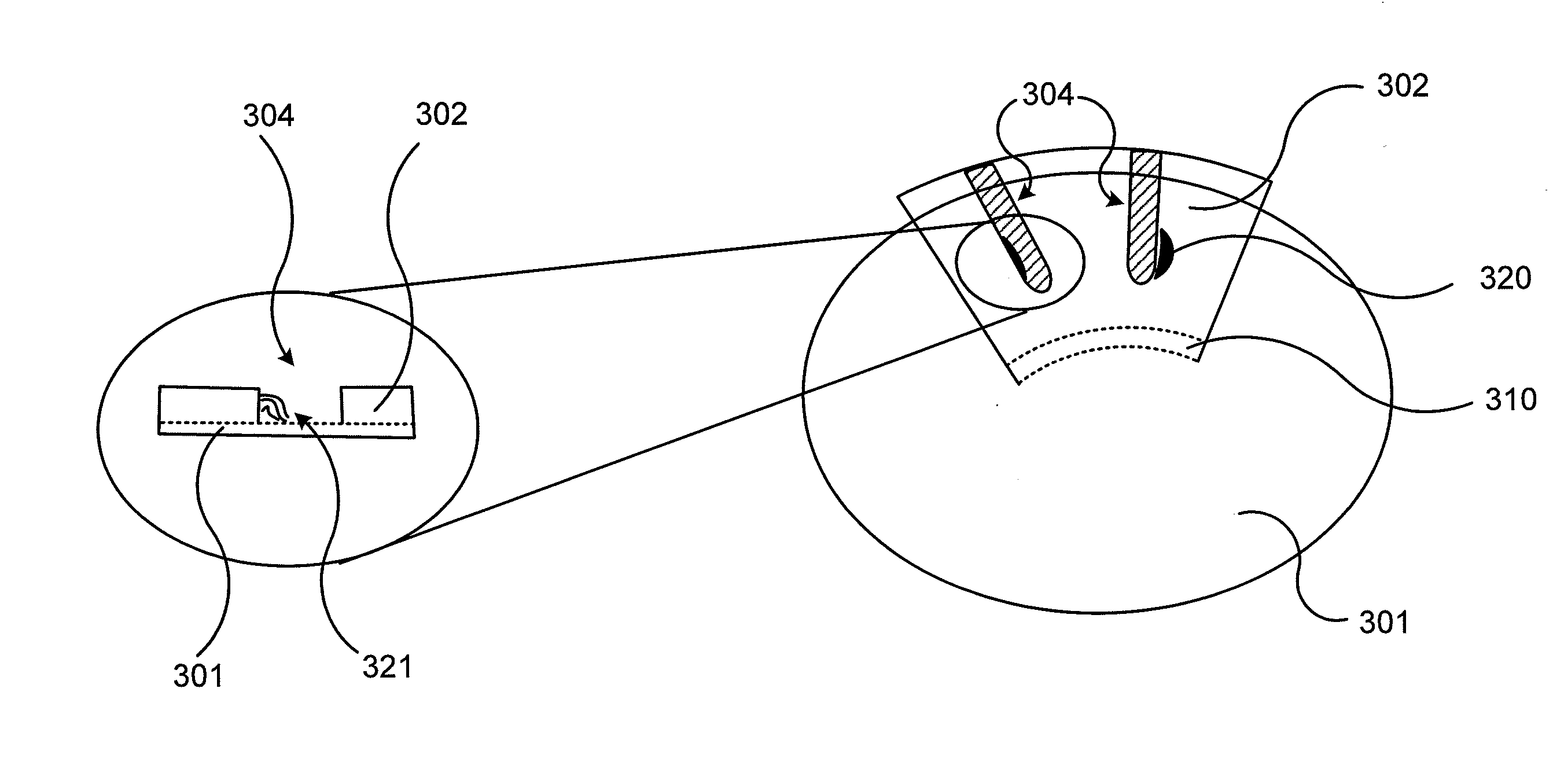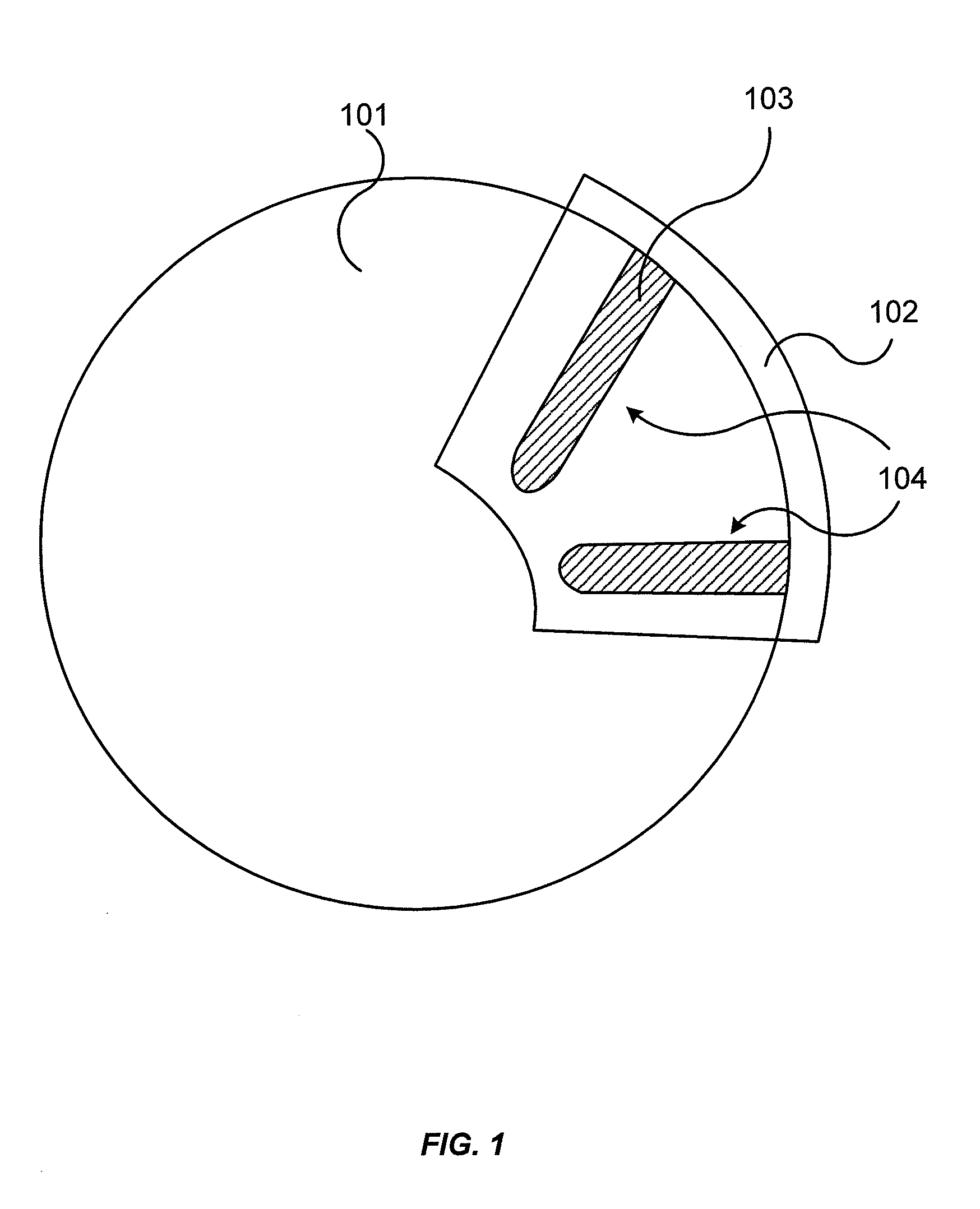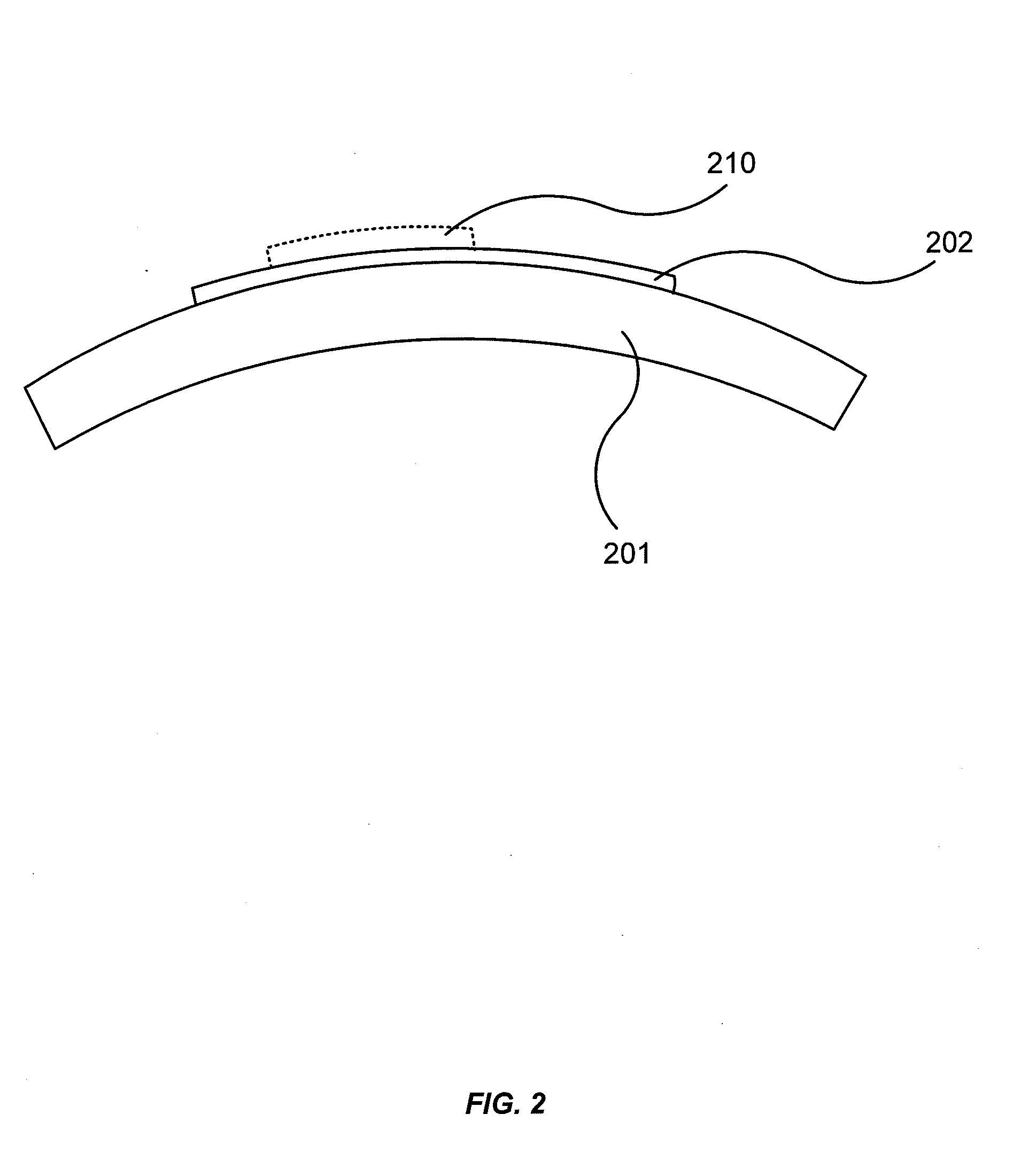Use of electro-static mask to apply layers to an electro-active optical element
an electro-static mask and optical element technology, applied in the direction of instruments, coatings, spectacles/goggles, etc., can solve the problems of requiring additional processing steps, etc., and achieve the effect of reducing or eliminating the use of adhesive materials and affecting the appearance or performance of the electro-active lens
- Summary
- Abstract
- Description
- Claims
- Application Information
AI Technical Summary
Benefits of technology
Problems solved by technology
Method used
Image
Examples
Embodiment Construction
[0025]Some terms that are used herein are described in further detail as follows:
[0026]As used herein, the term “alignment layer” may refer to a layer of material that controls the alignment of liquid crystals in the absence of an external field and often adheres to the surface of a substrate (such as an electrode, a lens, lens blank, lens wafer, etc.).
[0027]As used herein, the term “comprising” is not intended to be limiting, but may be a transitional term synonymous with “including,”“containing,” or “characterized by.” The term “comprising” may thereby be inclusive or open-ended and does not exclude additional, unrecited elements or method steps when used in a claim or to describe an embodiment. For instance, in describing a method, “comprising” indicates that the claim is open-ended and allows for additional steps. In describing a device, “comprising” may mean that a named element(s) may be essential for an embodiment, but other elements may be added and still form a construct wi...
PUM
 Login to View More
Login to View More Abstract
Description
Claims
Application Information
 Login to View More
Login to View More - R&D
- Intellectual Property
- Life Sciences
- Materials
- Tech Scout
- Unparalleled Data Quality
- Higher Quality Content
- 60% Fewer Hallucinations
Browse by: Latest US Patents, China's latest patents, Technical Efficacy Thesaurus, Application Domain, Technology Topic, Popular Technical Reports.
© 2025 PatSnap. All rights reserved.Legal|Privacy policy|Modern Slavery Act Transparency Statement|Sitemap|About US| Contact US: help@patsnap.com



